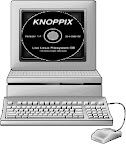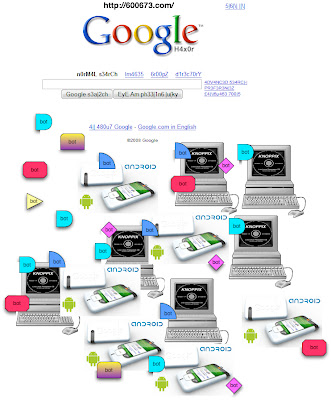In 2010 the Immediate-Connected-World (ICW) broke. Due to a combination of 1) Corporate dissolutions without replacement 2) Terrorist/activist systems disruptions 3) and decline of uniform and ubiquitous governmental services -the Immediate-Connected-World broke into the Organic-Connected-World (OCW). No, we did not revert to biologically bounded lifestyles ( an intellectual way of saying "living like the New World natives once did"), rather the world shifted a little sideways towards more ad-hoc means of interconnectivity and high technology.

 In the realm of personal computer and internet use the world has quickly adapted. Almost universal is the use of Knoppix Live CD's and Android for operating systems. All operating systems that have any success in connecting to the OCW are booted from a read-only configuration. The space in which a user saves preferences/bookmarks and document entries is on The Virus (TV).
In the realm of personal computer and internet use the world has quickly adapted. Almost universal is the use of Knoppix Live CD's and Android for operating systems. All operating systems that have any success in connecting to the OCW are booted from a read-only configuration. The space in which a user saves preferences/bookmarks and document entries is on The Virus (TV).
TV is a constantly self-redefining, self-regenerating, warring, policing and benevolently serving virus swarm functioning as the glue for the OCW. The interactive EXE and the modifiable DOC no longer lives on the client machine nor on the server farm, but on the TV . The network is still the computer, and Google is still the interface. But since the fall of ICW a user accessing Google search (the OCW version at http://600673.com/) is not likely in direct contact with the Google server farm in The Dalles, but rather accessing a transient ecosystem of bots/viruses that both herd the user's information/interactivity (input) through the swarm and also herd search results (output) to the user. Information is stored in a transient and ad-hoc manner within bots/viruses currently alive on machines. OCW emerged quickly to fill a needed function space, and also achieved a once impossible computer science goal. The OCW is a bizarre accomplishment of the long held desire to share computational power across all computers on the network. In 2008, cloud-computing allowed a small 400Mhz device with 1GB storage to utilize Google CPU/Storage resources. In 2010 every currently online CPU has combined into The Ad-Hoc Cluster CPU TACC.

Supporting documents:
DoS tools



2 comments:
In Challenges: Environmental Design for Pervasive Computing Systems Ravi Jain and John Wullert II suggest that we should actively work toward this type of computing.
They note that minimum operating system storage requirements actually decreased between 2000 and 2001 because software was installed as needed. They suggest that bloated user data could be reduced by journaling document formats that only store changes between versions (ala Google Documents) and self-destroying data.
Jain and Wullert also point out that functionality is moving from hardware to software, and from the individual machine to the network, and propose an Internet Scale Operating System (ISOS) tying everything together and adapting to physical conditions such as local weather vs. heat generated by computation.
Here's an idea for developing the seed of The Virus today:
A distributed anti-malware program that aggressively attacks botnets, "liberating them". The liberation might be non-coercive: the system tries to send a message to the user of the compromised system
informing them of their involvement in a botnet and inviting them to join the network of liberated machines. Incentives to accept liberation could include access to shared computing resources. For
example 20% of the distributed systems processing power might be reserved for counter-malware activity while up to 80% is divided up between liberated machines based on current demand.
Some anti-malware product/service vendors are trying to do similar things where users can opt to have their computer report suspicious websites to the vendor to improve the product/service. The system I'm
proposing would be different: it's an Internet Scale Operating System (ISOS) that balances resources between users and the anti-malware aspect of it is part of the security model. The ISOS requires an
active seek-and-destroy security model instead of a security model based on barrier and conduit metaphors. Unlike the product/service model of security, this approach has the potential to actually reduce the amount of abuse and crime on the internet, because it polices and intervenes rather than simply offering private security services or playing neighborhood watch.
Post a Comment